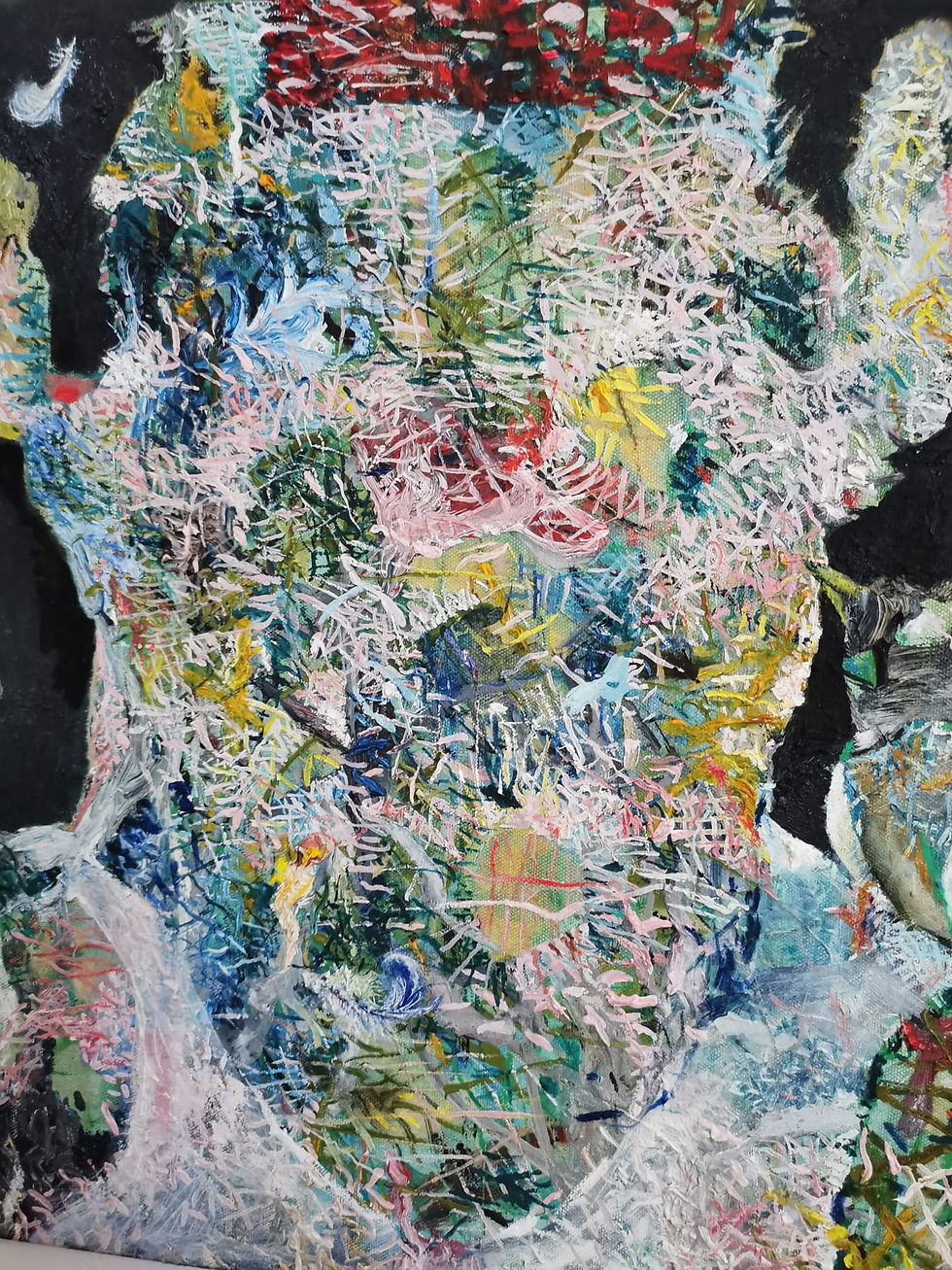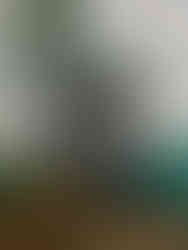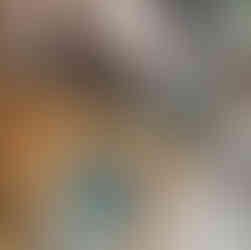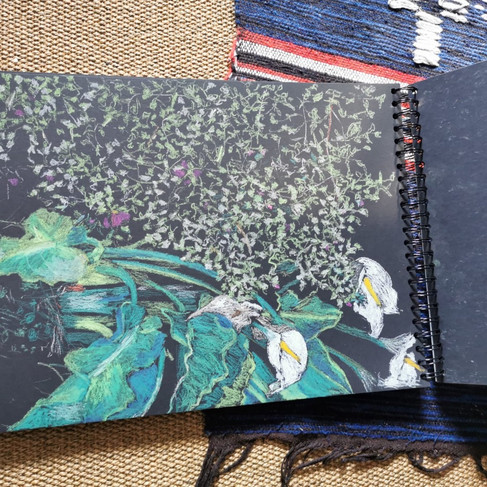THE MANEL GüELL INTERVIEW
- theartsproject1
- Nov 24, 2021
- 6 min read

Manel Güell
Peter Herbert introduces our Artist of the Month
"Manel Güell was described recently by Terence Wilde as a real authentic artist who reveals the darker side of the soul. The Arts Project agrees that as Manel is an artist whose work can be poignant and beautiful, as well as raw and sometimes challenging, with reflections of the physical and mental health of a remarkable man with a talent to please as well as disturb. After four exhibitions with The Arts Project, we decided it was time to turn our spotlight on this remarkable Catalonian born artist who now lives in London."
You were born in 1968 as one of eight children with a father who was a village postman and a mother who managed a household shop. As the only gay member of the family - who built a life outside of this rural family background - can you tell us about what led you to move beyond the family, the experiences that prompted you to look for a life beyond Catalonia?
"Despite my loving and close family, there was a clear side within me since I was a child that was telling me that one day I would leave. Having to do military service at the age of 20 was the perfect moment for me to make that happen. I am not entirely clear what was first, since sexuality is at best, misty during childhood development, but the desire to see beyond and the need to untangle myself from the constraints of a very large family, must have all been linked. In those days popular gay or unconventional roles were not abundant, specially if you lived in a small town, so I imagine that’s where the search for identity began."

Although you were seven when Franco died, can you tell us how these still raw repressive scars of Franco and Catholic repression of sexuality impacted on your early work, much as it can also be seen in the films of Luis Bunuel and other Spanish artists during this period?
"The Catholic repression that was used and abused by the regime came out, almost literally, in this totally unplanned image: “Flame”. This penitente figure is hidden by his outfit, because of the shameful sin of the flesh. Not being able to accept, let alone to say, how much you love, how deeply you desire, can turn you into a wooden automaton.
It is fascinating to me how deep feelings of how we feel about the world and our place in it, can manifest in a work of art.
I try to be the type of painter that doesn’t plan too much before I start a painting, but through the action of doing it, something compared to hypnosis, tends to happen and often the final result can be revelatory."
Your life and work reflects three places. Your birth in Catalonia in 1968, the move to London in 1990 and the link of Paris between 1991 and 1995. Can you tell us about your life and creativity in Paris, which you describe as a metaphor of the lover who gorges on the sexuality of a person and spits it out when another comes along?
"Paris was wonderful and liberating despite the difficulty of finding work, since Spain was not fully a member of the EU. I shared a flat for the first time with openly gay people and got involved emotionally with a wonderful man (who was studying art at Parsons School of Art in Paris) when I had a shocking HIV + result after a routine test. At that moment I had to rethink all my future plans and it was then that art returned back into my life with real passion."


Your move to London in 1995 provided a settled environment to come to terms with health and creativity. How did English ideas of class structures and divisions (as well as a serious operation on your back/spine in 1997) impact on expressing your creative inspiration?
"The class-less nature of artists gives some protection, I hope, from the highly classifying structures that societies have created.
London was perfect and had so much to offer, so many possibilities, so when I decided to study a university degree, not knowing how my health would be in the future, Fine Art seemed the right choice. To discover contemporary and conceptual art, artists like Robert Gobber, Andres Serrano, Pepe Espaliu, authors like Susan Sontag, Michel Foucault, etc. gave me the confidence to expose my own experience through visual form."
Your work has themes linked to disfiguring of the body, in particular legs and feet, for which you draw inspiration from the work of Velazquez and Rubens. Can you tell us about this delicate and sensitive process which absorbs the work of these great masters into a totally new experience?
"It is difficult to try to be loyal to certain ideas of what is considered beautiful in painting today, without falling into a nostalgic trap or a revival of the old. The greatness that those old masters achieved is marvellous and if some of that grand beauty can be transferred to a more free way of handling paint, why not use it? By studying the old masters, and drawing inspiration from sections of the original paintings, I hope to gain a little of that freedom and understanding of what paint can convey emotionally.
The beauty and vitality of some of those bodies as depicted by Rubens, contrast with my own physical deficiencies. As for Velazquez, he gave us the marvellous timeless depictions of persons with physical impairments. These are some of the elements that inform some of my painting."


How has the pandemic affected your creativity?
"Everything has gone up in the air for me in terms of creativity. I found it difficult to go on painting as normal as before and my motivation levels went right down. However, I was lucky enough to have access to a garden during the strictest lockdown times and looking closely into nature, with the glorious weather that we had, gave me the opportunity to get back to that intimate relationship with nature, flowers in particular, that can be so restoring and healing."
To relax and chill can you tell us why you chose and liked the last book you read?
"When I heard about Elena Ferrante’s “My Brilliant Friend” the first book of her “Neapolitan Novels” I liked the name and was intrigued by the mystery surrounding the author. When I started reading it, I couldn’t stop until I had read the four books.
The writing I found totally enrapturing, with all the different characters and wonderful to enter the inner worlds of two brilliant friends, totally in admiration for each other. The way in which it narrates how education can transform someone’s life is moving and wonderful."
Thanks Dan for sharing with us some of the ideas, techniques and sources of your inspiration. We are pleased to include an image of Tracey Barnes and the pleasure your artwork provides...

Finally, we are pleased to note that the most recent film that inspired and delighted you is Fernando Frias I'm No Longer Here'. Made in Mexico in 2019, it is not a surprise that it is this film with its striking central performance by Juan Daniel Garcia Trevino. Can you tell us what inspired you about the film and if there are any links to you and your work?
"I loved the small moment in time that frames the film, and the particular area within a city where the story happens, seems to make it all the more universal. The unexpected displacement of the main character is so touching, because he is of a certain age, no longer a child and yet too young to be called a man. What matters most to him is a trend that is already fading but, to him, means so much because his whole identity is totally linked with his head. His return to the place where he once belonged is full of pathos because all that he loved has now changed. The film feels like a fresh and vital moment in time just like the male character in this particular stage of life.
With the difficulty about travelling at the moment and after almost two years without seeing family, that sense of homesickness was something that I could identify with."
"The novel was subsequently filmed by Savio Costanzo in 2018"
The official trailer for, I'M NO LONGER THERE.

You can follow Manel Güell on:
Manel, thank you for being our Artist of the Month.























Comments